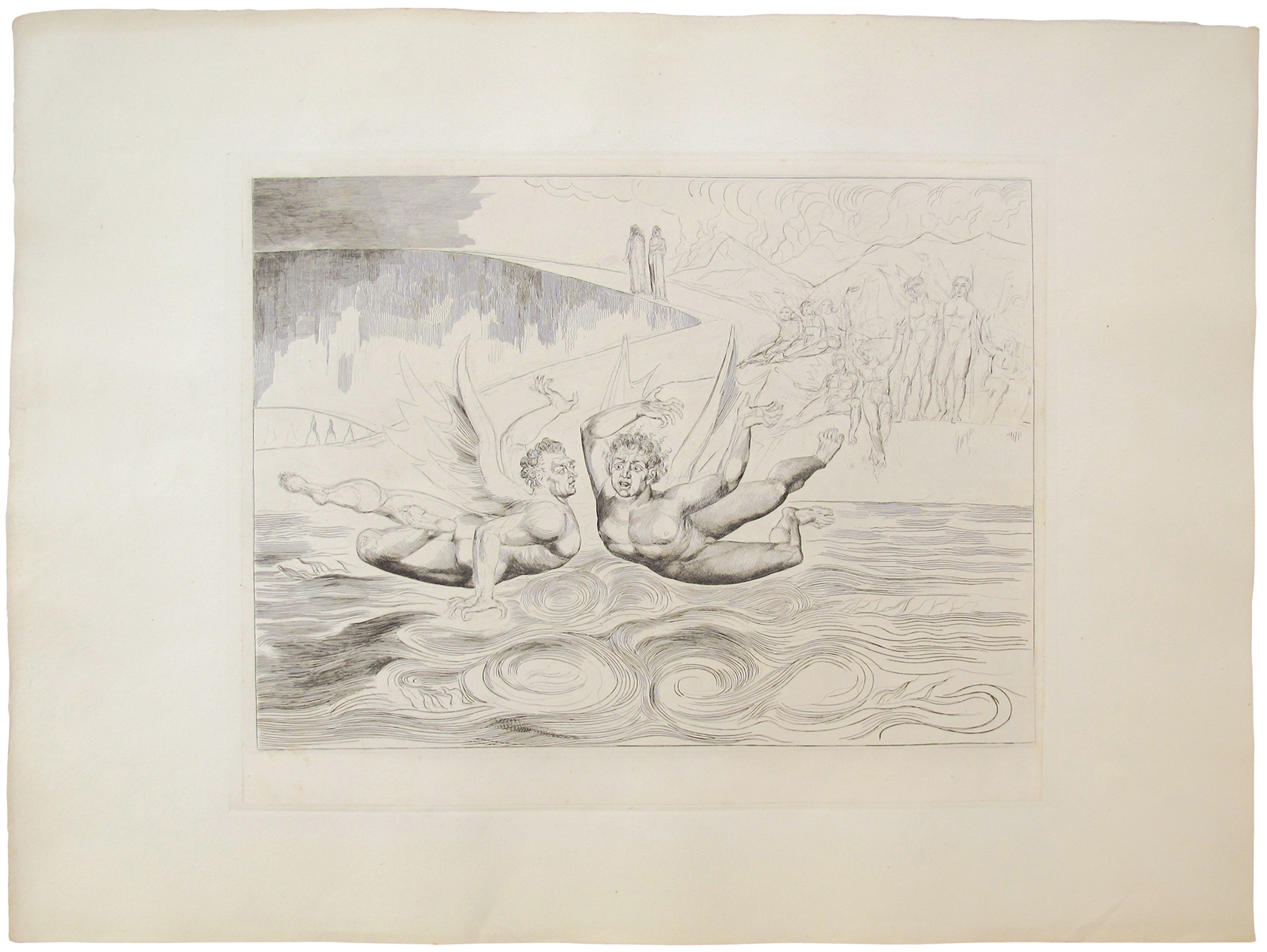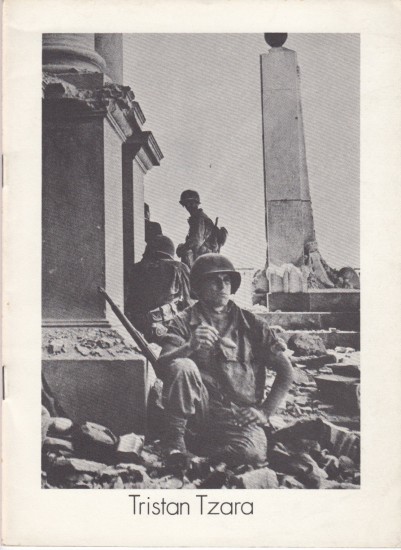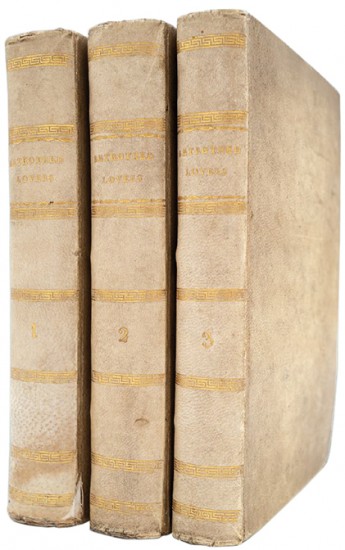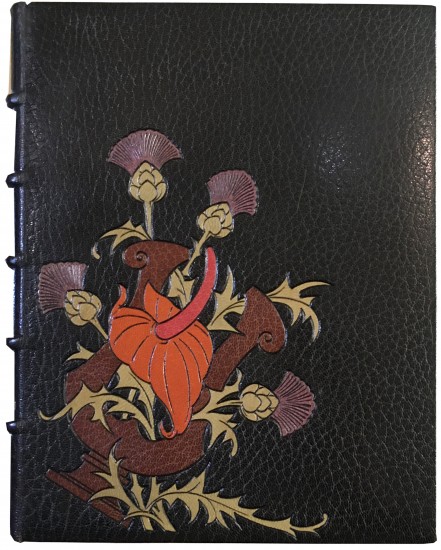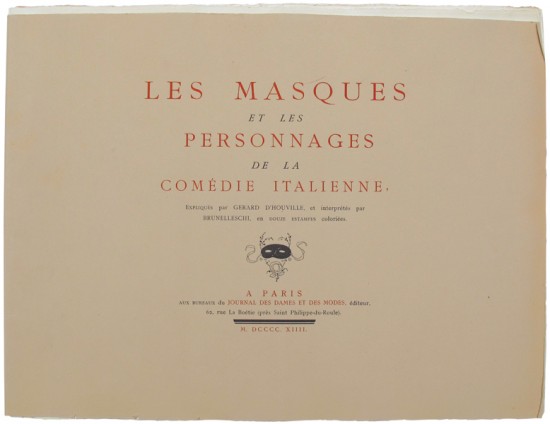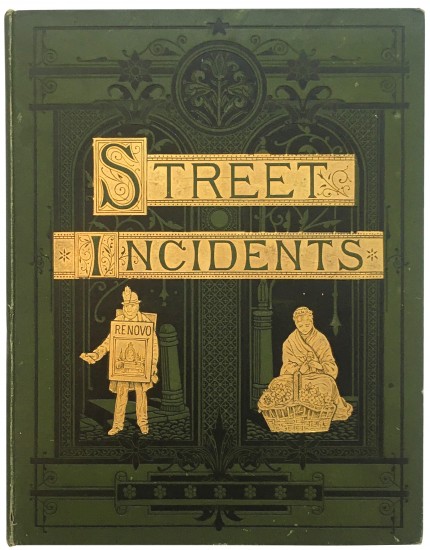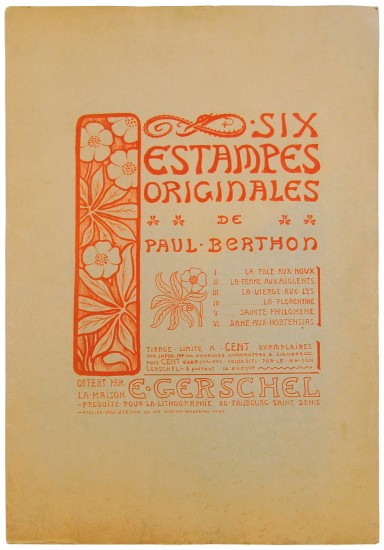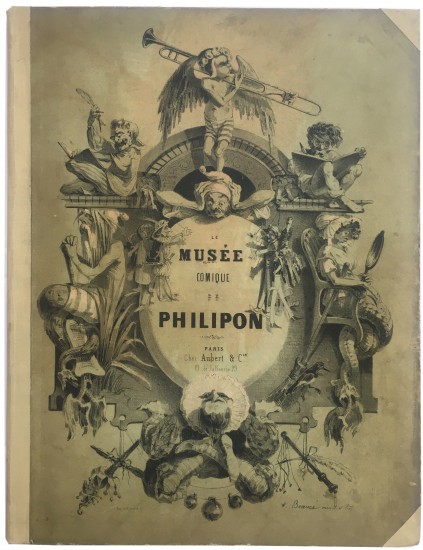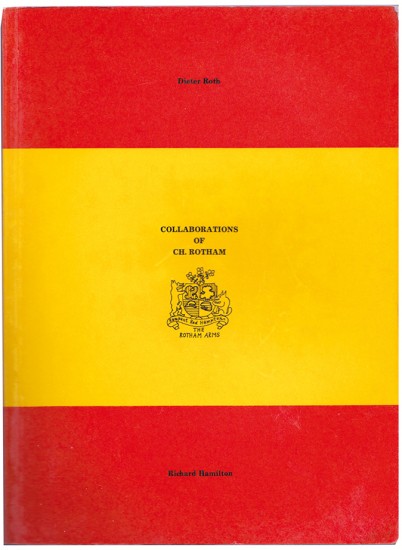Illustrations to Dante's Divine Comedy
Blake, William
(London). (Dixon & Ross for John Linnell). 1838.
Sold
A very scarce complete set of William Blake's unfinished 'Illustrations to Dante's Divine Comedy'.
Blake's engravings for 'Illustrations to Dante's Divine Comedy' were based on a series of watercolours commissioned by John Linnell in around 1824. Over the course of Blake's remaining years, these drawings - he completed 102 for the project - and the present engravings derived from them, occupied Blake, although the engravings, begun in 1826, were left unfinished at his death in 1827. Blake had pulled proofs of several of the engravings (these are now in the British Museum, the Fitzwilliam and elsewhere) but it was not until the purchase of the engraving plates themselves by John Linnell that an edition was published, printed by Dixon and Ross in 1838.
Various limitations have been suggested for that initial printing: Keynes suggests 120 sets of the plates (he may have been giving the figure for the combined issue - see below), Bentley (citing the printers' daybook) gives 55 as the number of sets issued, while Essick refines the figure further (also using the printers' daybook) to 38 sets, an initial 25 sets printed on September 26th and a further 13 sets on October 2nd, all on chine appliqué (or laid India). To confuse matters further, an additional 50 sets of the plates, also on chine appliqué, were printed c.1892 by Holdgate Bros., again for the Linnell family; several facsimiles of the plates were issued in the 20th century.
The Linnell family, in the guise of John Linnell's sons William and James, were keen to make the 1892 impressions as close to the earlier versions as possible and chose paper and printing technique accordingly. As a result of this, it appears a virtual impossibilty to attribute the plates with any definition to one printing or another. The traditional idea that Whatman paper was used only for the first printing is undermined by a letter from William Linnell in 1892 'that Whatman drawing paper is the nearest in quality and appearance to the old prints'.
'The seven engravings were all left unfinished upon Blake's death in 1827 and the only contemporary impressions are a few progress proofs … Blake began the watercolour drawings for Dante at least as early as 1825, but the first indication that he had made progress upon the engravings is to be found in a letter to Linnell of February, 1827, and in one of his last letters: on 25 April 1827 he wrote that he had 'Proved the Six Plates, & reduced the Fighting devils ready for the Copper'. (Bindman).
'In the Dante plates, Blake puts into practice more fully than elsewhere his contention that 'Engraving is drawing in Copper & Nothing Else''. (Robert Essick).
The plates are titled as follows:
- The Circle of the Lustful: Paolo and Francesca. (Inferno, Canto V).
- The Circle of the Corrupt Officials: the Devils Tormenting Ciampolo. (Inferno, Canto XXII).
- The Circle of the Corrupt Officials: the Devils Mauling Each Other. (Inferno, Canto XXII).
- The Circle of the Thieves: Agnolo Brunelleschi Attacked by a Six-Footed Serpent. (Inferno, Canto XXV).
- The Circle of the Thieves: Buoso Donati Attacked by the Serpent. (Inferno, canto XXV).
- The Circle of the Falsifiers: Dante and Virgil Covering their Noses because of the Stench. (Inferno, Canto XXIX).
- The Circle of the Traitors: Dante's Foot Striking Bocca degli Abbate. (Inferno, Canto XXXII).
[Bindman 647- 653; see Robert N. Essick's 'The Printing of Blake's Dante Engravings', 1990].
Blake's engravings for 'Illustrations to Dante's Divine Comedy' were based on a series of watercolours commissioned by John Linnell in around 1824. Over the course of Blake's remaining years, these drawings - he completed 102 for the project - and the present engravings derived from them, occupied Blake, although the engravings, begun in 1826, were left unfinished at his death in 1827. Blake had pulled proofs of several of the engravings (these are now in the British Museum, the Fitzwilliam and elsewhere) but it was not until the purchase of the engraving plates themselves by John Linnell that an edition was published, printed by Dixon and Ross in 1838.
Various limitations have been suggested for that initial printing: Keynes suggests 120 sets of the plates (he may have been giving the figure for the combined issue - see below), Bentley (citing the printers' daybook) gives 55 as the number of sets issued, while Essick refines the figure further (also using the printers' daybook) to 38 sets, an initial 25 sets printed on September 26th and a further 13 sets on October 2nd, all on chine appliqué (or laid India). To confuse matters further, an additional 50 sets of the plates, also on chine appliqué, were printed c.1892 by Holdgate Bros., again for the Linnell family; several facsimiles of the plates were issued in the 20th century.
The Linnell family, in the guise of John Linnell's sons William and James, were keen to make the 1892 impressions as close to the earlier versions as possible and chose paper and printing technique accordingly. As a result of this, it appears a virtual impossibilty to attribute the plates with any definition to one printing or another. The traditional idea that Whatman paper was used only for the first printing is undermined by a letter from William Linnell in 1892 'that Whatman drawing paper is the nearest in quality and appearance to the old prints'.
'The seven engravings were all left unfinished upon Blake's death in 1827 and the only contemporary impressions are a few progress proofs … Blake began the watercolour drawings for Dante at least as early as 1825, but the first indication that he had made progress upon the engravings is to be found in a letter to Linnell of February, 1827, and in one of his last letters: on 25 April 1827 he wrote that he had 'Proved the Six Plates, & reduced the Fighting devils ready for the Copper'. (Bindman).
'In the Dante plates, Blake puts into practice more fully than elsewhere his contention that 'Engraving is drawing in Copper & Nothing Else''. (Robert Essick).
The plates are titled as follows:
- The Circle of the Lustful: Paolo and Francesca. (Inferno, Canto V).
- The Circle of the Corrupt Officials: the Devils Tormenting Ciampolo. (Inferno, Canto XXII).
- The Circle of the Corrupt Officials: the Devils Mauling Each Other. (Inferno, Canto XXII).
- The Circle of the Thieves: Agnolo Brunelleschi Attacked by a Six-Footed Serpent. (Inferno, Canto XXV).
- The Circle of the Thieves: Buoso Donati Attacked by the Serpent. (Inferno, canto XXV).
- The Circle of the Falsifiers: Dante and Virgil Covering their Noses because of the Stench. (Inferno, Canto XXIX).
- The Circle of the Traitors: Dante's Foot Striking Bocca degli Abbate. (Inferno, Canto XXXII).
[Bindman 647- 653; see Robert N. Essick's 'The Printing of Blake's Dante Engravings', 1990].
Oblong folio. (c.400 x 550 mm). Seven engraved plates by William Blake on chine appliqué / laid India on thick wove backing sheets; sheet size: each c.398 x 546 mm. Loose as issued.
#46987
